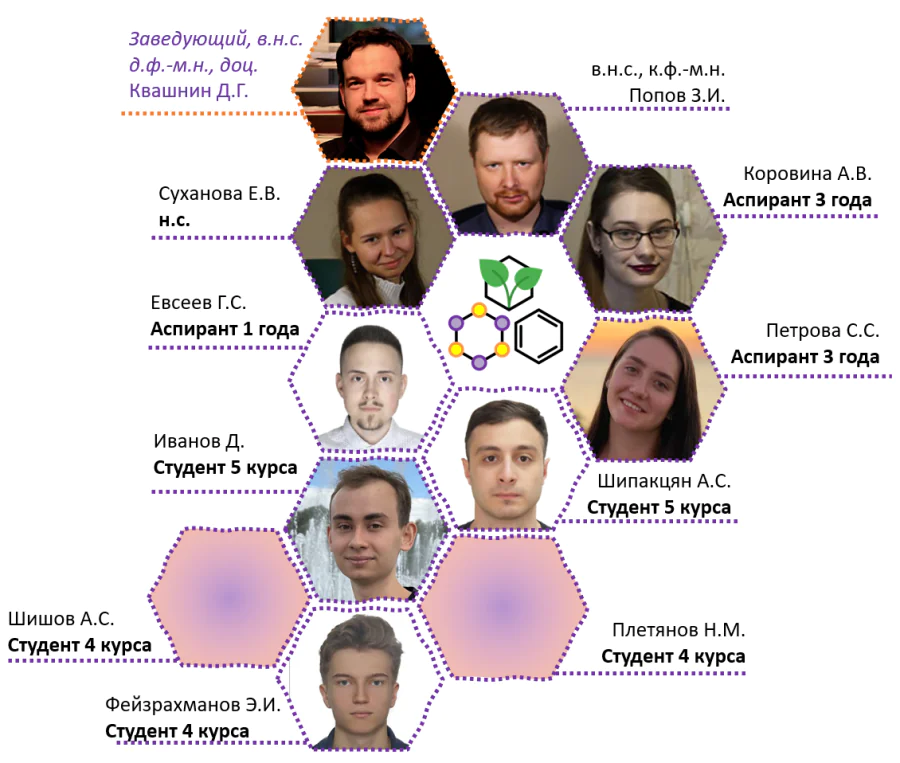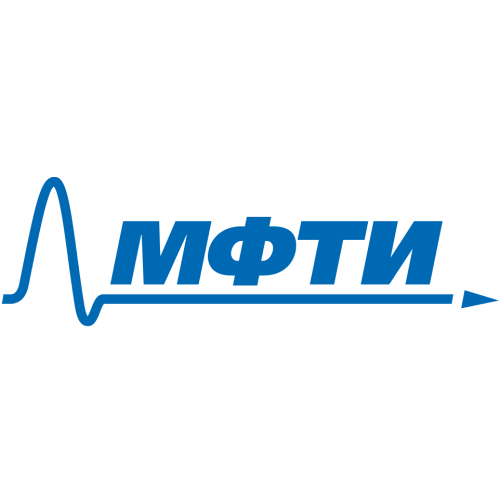Center for Computer Modeling of Inorganic and Composite Nanoscale Materials
Publications
110
Citations
4 647
h-index
23
Laboratory doesn't accept messages.

The Center's staff is engaged in solving fundamental problems at the intersection of physics, chemistry and biology. The main profile of the Center is the use of modern computational methods of computer materials science, such as quantum chemical methods, evolutionary algorithms, machine learning and artificial intelligence methods to solve tasks. The group's research is supported by several grants from the Russian Science Foundation (RNF), an international grant from the Russian Foundation for Basic Research (RFBR) and a grant from the President of the Russian Federation for state support of young Russian scientists and state support from leading scientific schools of the Russian Federation.
- DFT calculations
- Molecular dynamics and quantum chemical calculations
- The evolutionary search for materials
- Machine learning
- Deep neural network architectures
Zakhar Popov
Leading researcher

Anastasia Korovina
Junior researcher

Albert Shipaktsyan
Student
Denis Ivanov
Student
Research directions
Low density nanomaterials for various applications
+
Research of nanoporous materials based on light elements, as well as new Mo-S phases for use as filter elements, chemically active surfaces for hydrogen production and storage, lithium-ion battery elements
Investigation of implantation processes of low-dimensional nanomaterials
+
Modeling of the processes of implantation of CNTs, fullerenes, atomic groups and ions into the surface of low-dimensional nanomaterials. Search for possible methods for obtaining new porous nanostructures and quantum dots using implantation.
New 0D/2D heterostructures for photonics, sensors and catalysis
+
Two-dimensional nanomaterials represent a promising platform for creating materials with the potential for use in a wide range of applications: optics, sensors, catalysis. An obstacle to the widespread use of newly synthesized two-dimensional nanomaterials of various chemical compositions is their low stability in the environment under normal conditions. An alternative to the search for new low-dimensional structures can be the functionalization of known structures of metal dichalcogenides (DPM) and two-dimensional forms of carbon, such as graphene and its derivatives (graphene oxide (OH), reduced graphene oxide) in order to give them the desired properties. Thus, it is possible not only to increase their stability in the environment, but also to significantly improve their characteristics. The project is aimed at finding new scalable approaches for the functionalization of the surface of two-dimensional nanomaterials with organic molecules to detect promising coatings not only to protect materials from degradation under the influence of environmental conditions, but also to endow this material and the entire resulting new heterostructure with a unique set of necessary properties for potential application in industry.
Prediction of the structure and properties of new two-dimensional polymer materials based on organic molecules
+
Investigation of the possibility of covalent bonding between organic molecules in order to create a two-dimensional layer. Prediction of atomic structure, study of physical and chemical properties.
Development of analytical models and algorithms based on neural networks to effectively describe the relationship between structure and properties
+
Investigation of the influence of external disturbances, such as mechanical deformations, electric field on the physico-chemical properties of low-dimensional nanomaterials. The study and description of the patterns between atomic structure and properties. Creation of an analytical model for calculating polarization and piezoelectric coefficients in two-dimensional materials. Training a neural network-based model to describe the relationship between structure and piezoelectric properties.
Design of low-dimensional nanomaterials for artificial photosynthesis
+
Artificial photosynthesis is a chemical process that biomimicrates the natural process of photosynthesis to convert sunlight, water, and carbon dioxide into carbohydrates and oxygen. The term artificial photosynthesis is commonly used to refer to any scheme for capturing and storing the energy of sunlight in chemical bonds of fuel (solar fuel). The proposed research is aimed at finding new materials for the implementation of photocatalytic splitting of water with the formation of hydrogen and oxygen
Publications and patents
Found
Nothing found, try to update filter.
Леонид Александрович Чернозатонский, Виктор Александрович Демин, Дмитрий Геннадьевич Квашнин
RU2772338,
2022
2025
—
| Квашнин Дмитрий Геннадьевич
2023
—
2024
| Суханова Екатерина Владимировна
2021
—
2024
| Квашнин Дмитрий Геннадьевич
2021
—
2024
| Попов Захар Иванович
Lab address
Москва, ул.Косыгина 4, комн. 13
Laboratory doesn't accept messages.











